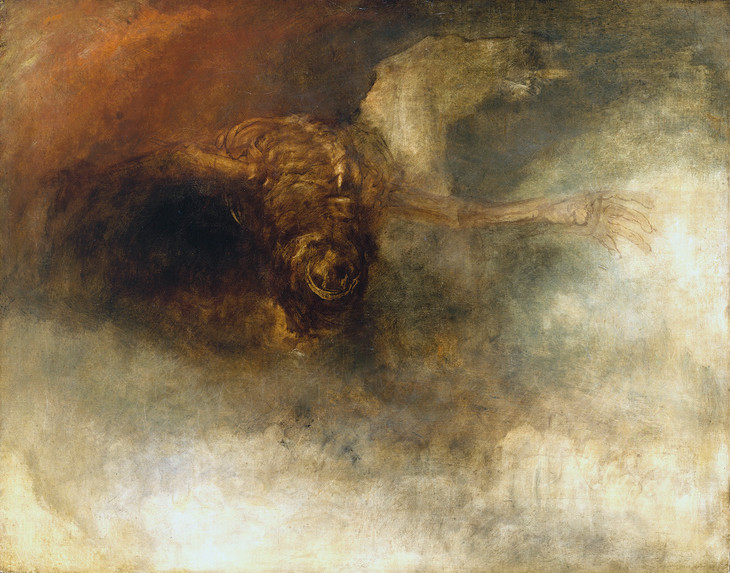Joseph Mallord William Turner Death on a Pale Horse (?) c.1825–30

Joseph Mallord William Turner 1775–1851
Death on a Pale Horse (?) c.1825–30
Oil paint on canvas
support: 597 x 756 mm; frame: 776 x 940 x 68 mm
Tate N05504
Accepted by the nation as part of the Turner Bequest 1856
Joseph Mallord William Turner 1775–1851
Death on a Pale Horse (?) c.1825–30
Oil paint on canvas
support: 597 x 756 mm; frame: 776 x 940 x 68 mm
Tate N05504
Accepted by the nation as part of the Turner Bequest 1856
Although possibly incomplete, the subject can be identified as Death, the last of the Four Horsemen of the Apocalypse who announce the Day of Judgement (Book of Revelation). The choice may have been in response to the death of Turner’s father in 1829, suggested by the unusual treatment which is both tender and menacing. Death appears, not as a triumphant, upright figure astride his horse, but as a phantom emerging from a turbulent mist: his skeletal form, arms outstretched, and draped submissively over the horse’s pale back. Such disturbing visions were considered to embody the very concept of the sublime.
How to cite
Joseph Mallord William Turner, Death on a Pale Horse (?) c.1825-30, in Nigel Llewellyn and Christine Riding (eds.), The Art of the Sublime, Tate Research Publication, January 2013, https://www
